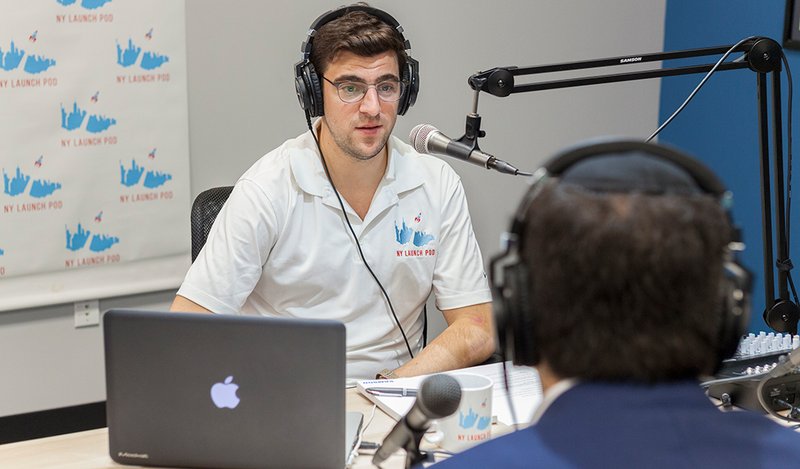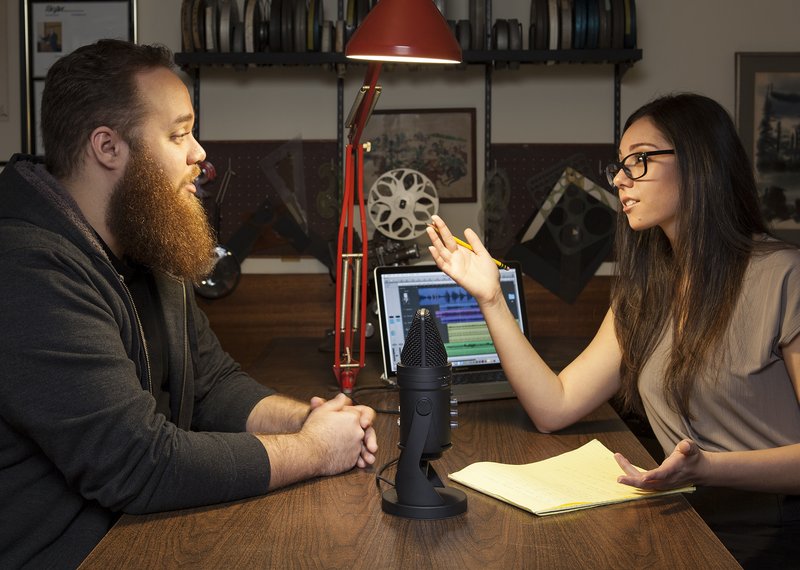A Primer for DIY Podcasting
The social media explosion continues to grow and evolve all around us. Personal platforms for online communication ebb and flow. Pioneers like Myspace have waned, or completely disappeared, while sites like Facebook and Instagram now tie generations together around the globe. These online platforms allow nearly anyone to instantly self-publish their thoughts and ideas and share them with friends, family, and the world. In addition, commercial entities and social causes have reached out to distribute their ideas, inform the populace, and recruit supporters. This can be something as simple as clicking a “LIKE” button for Black Cherry Fresca, reading the blog of a cancer survivor, joining an online book club, or listening to the podcast of a social cause you may support.

Podcasting 101
Podcasting is the audio equivalent of a text-based blog. Podcasts, like blogs, are primarily set up around a specific topic, and the owner of the podcast will periodically add new episodes relating to that topic or of interest to their subscribers.
For the creator of the podcast, their end product is a digital audio file, often in the widely-used MP3 format. Once the podcast has been created on the owner’s computer or device, the digital audio data file is uploaded and stored on a server so that it can be reliably accessed by multiple worldwide users at all hours of the day.
There are a number of commercial servers that can host your podcast. Some are available at no charge, others charge a nominal fee. Users can visit the host page manually, while subscribers to a podcast automatically receive a notification when a new episode has been added. Subscribers can listen to their favorite podcasts at home on their computers, on their smartphones as they commute to work or any place where they can access the web.
What do I Need?
To create your podcast, you will need the following technical items:
- A digital recording device: Your computer, laptop, smartphone, or hand-held device will do. Audio editing software (Audacity, GarageBand, etc.) will greatly improve the quality of your podcast.
- A microphone to record your voice: While there may be a microphone built in to most smartphones and devices, it may be hard to achieve the clarity and fidelity you’re seeking. Instead, look to the full range of professional and USB microphones available from Samson to attain the best results.
- A way to listen to the recording: Monitor the creation and playback of your podcast with self-powered loudspeakers or headphones from Samson, or use the speaker(s) in your laptop or device.
- A subscription to a web hosting site: This is the server where your podcast will reside.
- Access to the internet: You will need a way to upload your file to the server.
In addition, you will need the following non-technical items:
- A catchy name for your podcast series: Try to include something that might indicate what the podcast series is about.
- A title for this episode of your podcast: Again, offer some indication of content.
- A logo or image for your podcast: This could be a photo of you in front of the microphone, your logo, etc.
- A theme song or background music. Don’t violate anyone’s copyright!

How does it Work?
In short, you will be creating a miniature sound studio that is a cross between a recording studio and a radio broadcast studio. You can also enjoy on-the-go mobile recording anywhere your interests take you using a Samson USB microphone and the appropriate connector for your smartphone. The microphone(s) will convert the sound of your voice into an electrical signal. Using a converter, this electrical signal can be transformed into a digital audio signal that a smartphone, computer or other digital recording device can understand.
Samson offers a variety of USB microphones that can plug directly into your smartphone or computer without the need for a digital audio converter. Using any simple recording app or software, such as Apple’s GarageBand, allows you to record this audio information coming from the mic(s). With most apps, you’ll be able to test the mics and set the record and playback levels.
Next, you can record your podcast. Once the recording is complete, you can save or export the podcast as an MP3 format digital audio file. Upload the file to your host server, name it, label it and you’ve created a podcast!
Web Feed Protocols
As the internet continues to evolve into a more user-friendly digital wonderland, the need for every DIY content provider to master the extensive coding that makes things work continues to diminish.
For example, the HTML coding that commands text and other elements of a webpage to appear correctly often runs in the background of current consumer webpage creators, while the user interacts with more user-friendly commands (Bold, Italic, Color, etc.).
The same holds true for the modern podcast. Previously, the content creator would need to create a short XML script file (TD Script or RSS Feeds Submit) in order for the podcast to be labeled correctly and for subscription services to know that a new episode of a podcast had been posted. Most modern online server hosts will allow you to enter the information as you upload the podcast, and will generate the syndication file for you automatically.
